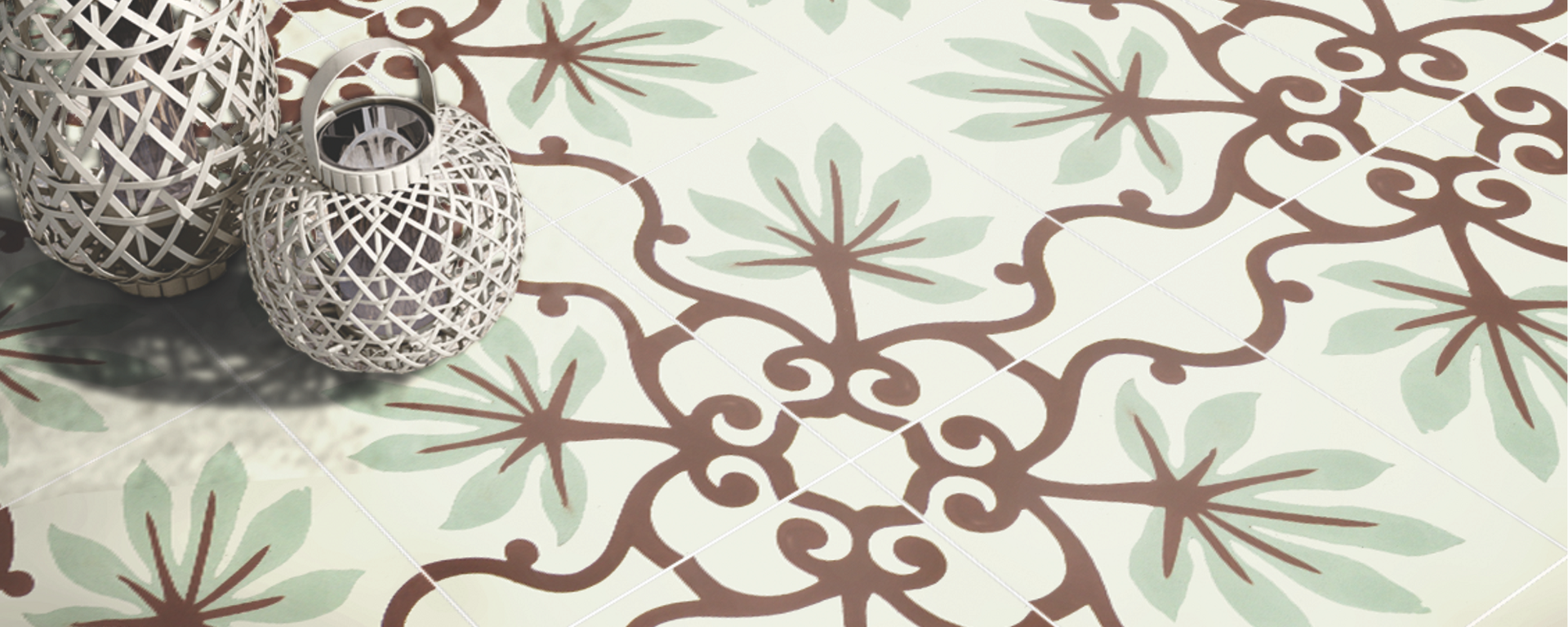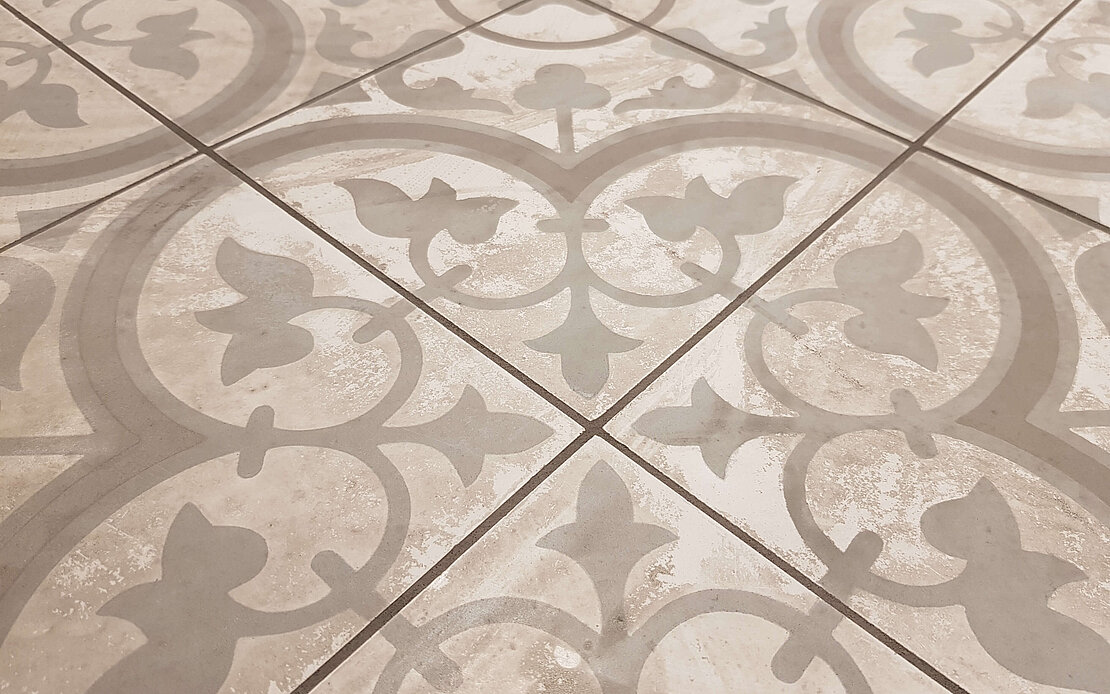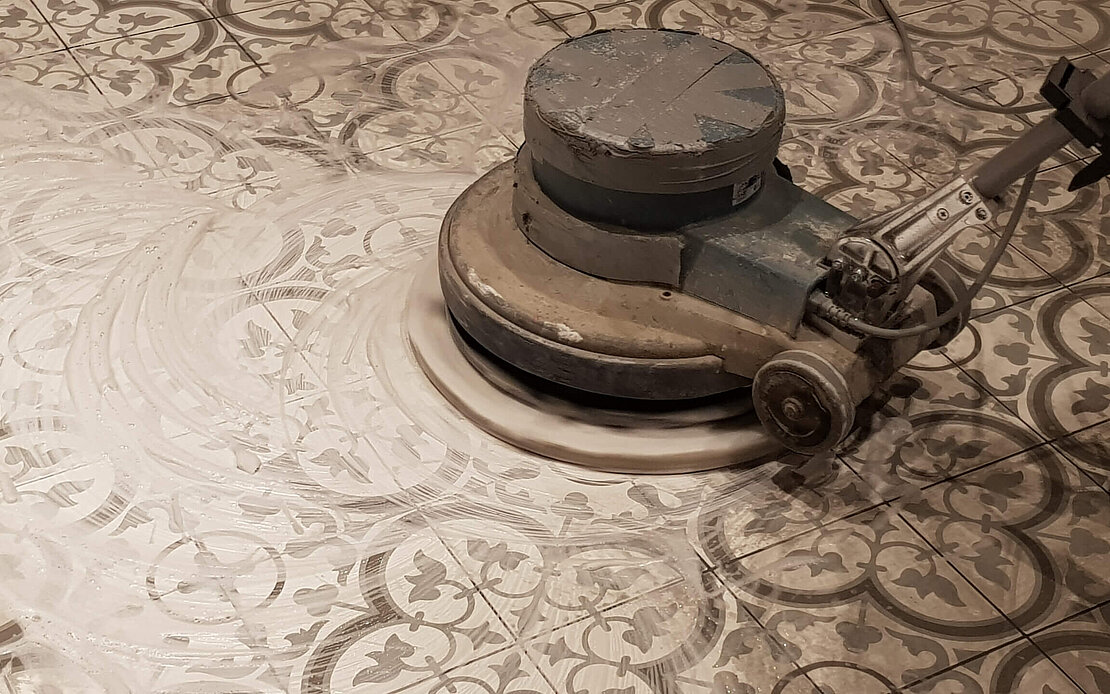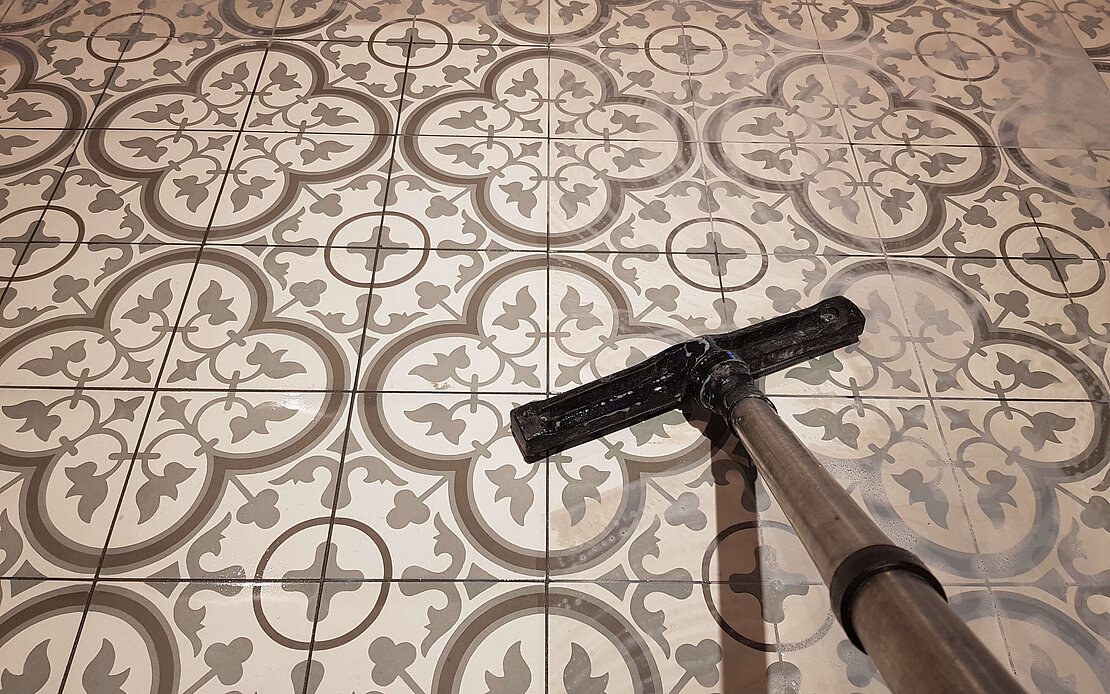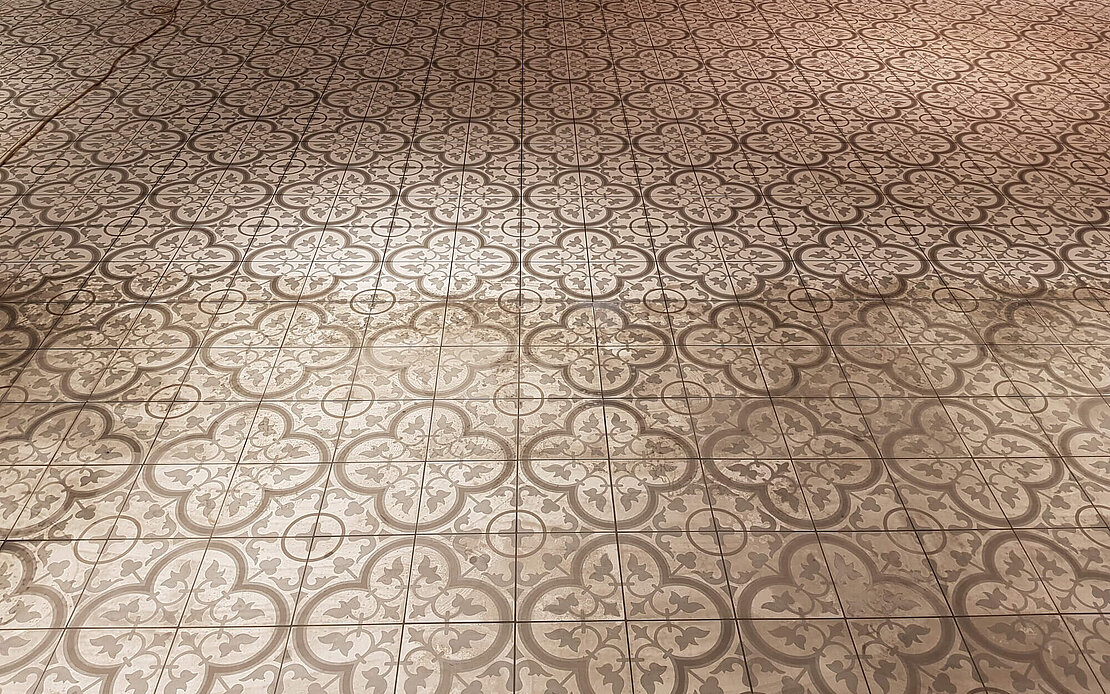Cement tiles and coloured grouting material
Is this even possible?
A self-preparation of two parts trass cement and one part fine quartz sand is often recommended for grouting cement tiles. This procedure is to ensure that there are no colour pigments in the grouting compound as in many industrially produced grouts. Cement tiles are hydraulically pressed during production.
Due to the lack of a burning process, they have a more or less finely porous surface. The use of pigmented grouts eventually leads to an accumulation of colour pigments in the open pores and thus to discolouration. Such colour particle accumulations are particularly noticeable when tile and grout colour are contrasting.
An impregnation applied before the grouting process reduces the water extraction from the still fresh joint, which prevents flank cracks due to shrinking. However, the penetration of colour pigments into the pores of the decorative layer cannot be prevented this way.
Cleaning without acidification. And now?
The decorative layer of a cement tile is made from a formula of marble powder, white cement and colour pigments. It is therefore clear that the finished product reacts very similarly to acidic liquids as lime-bound natural stone. "Acidification" to remove cement residues is hence out of the question.
The consequence of these circumstances is that builders and architects cannot include the joint colour as a stylistic element in the planning. However, this would be a welcome design element in view of the usually strong and varied colour shades of cement tiles.
Tips for cement tiles
We took this as an opportunity to develop a special process to open up new possibilities for creative design. This is because we have developed the grouting aid Lithofin MULTI-SEAL.
